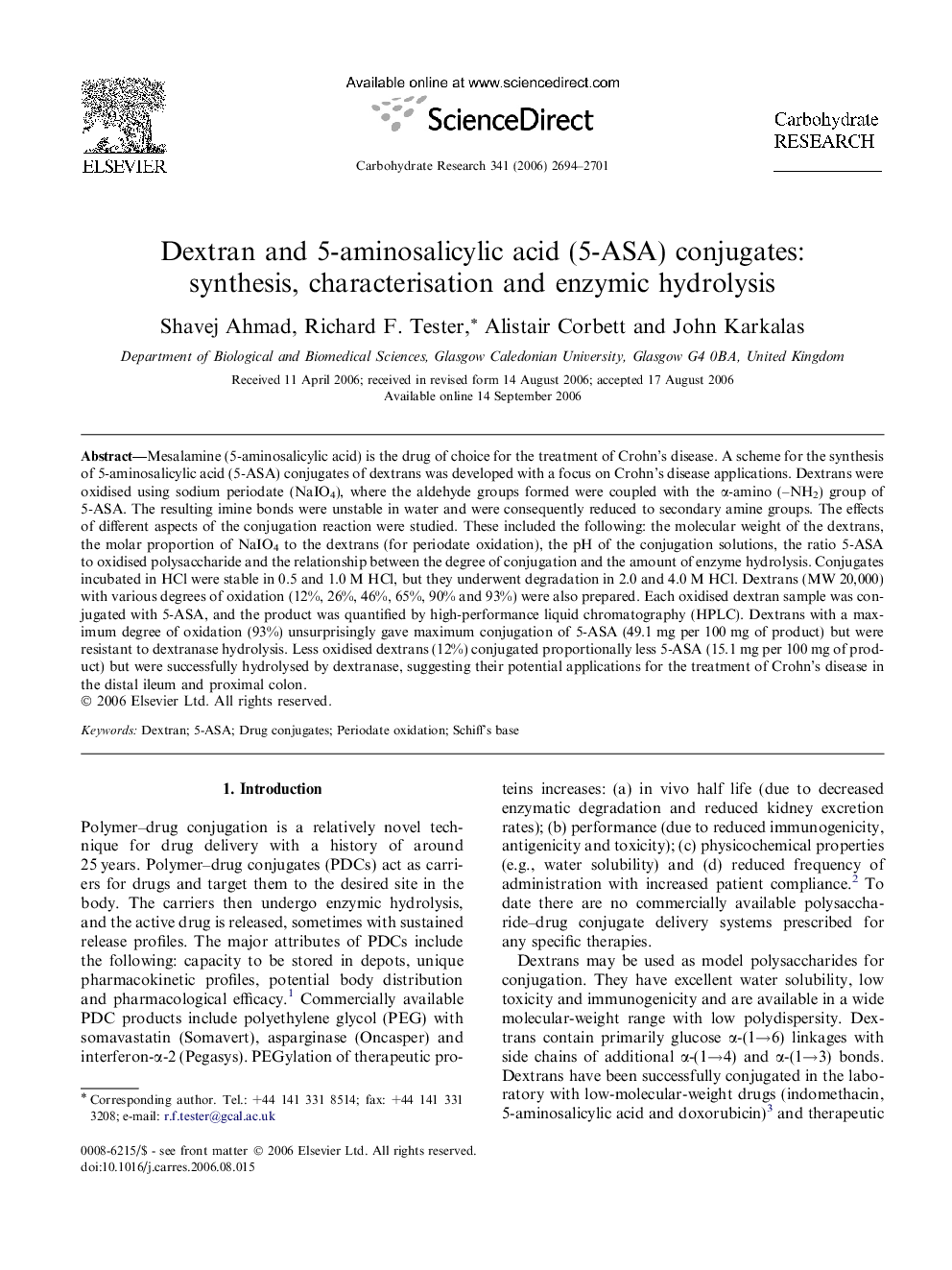| Article ID | Journal | Published Year | Pages | File Type |
|---|---|---|---|---|
| 1389387 | Carbohydrate Research | 2006 | 8 Pages |
Mesalamine (5-aminosalicylic acid) is the drug of choice for the treatment of Crohn’s disease. A scheme for the synthesis of 5-aminosalicylic acid (5-ASA) conjugates of dextrans was developed with a focus on Crohn’s disease applications. Dextrans were oxidised using sodium periodate (NaIO4), where the aldehyde groups formed were coupled with the α-amino (–NH2) group of 5-ASA. The resulting imine bonds were unstable in water and were consequently reduced to secondary amine groups. The effects of different aspects of the conjugation reaction were studied. These included the following: the molecular weight of the dextrans, the molar proportion of NaIO4 to the dextrans (for periodate oxidation), the pH of the conjugation solutions, the ratio 5-ASA to oxidised polysaccharide and the relationship between the degree of conjugation and the amount of enzyme hydrolysis. Conjugates incubated in HCl were stable in 0.5 and 1.0 M HCl, but they underwent degradation in 2.0 and 4.0 M HCl. Dextrans (MW 20,000) with various degrees of oxidation (12%, 26%, 46%, 65%, 90% and 93%) were also prepared. Each oxidised dextran sample was conjugated with 5-ASA, and the product was quantified by high-performance liquid chromatography (HPLC). Dextrans with a maximum degree of oxidation (93%) unsurprisingly gave maximum conjugation of 5-ASA (49.1 mg per 100 mg of product) but were resistant to dextranase hydrolysis. Less oxidised dextrans (12%) conjugated proportionally less 5-ASA (15.1 mg per 100 mg of product) but were successfully hydrolysed by dextranase, suggesting their potential applications for the treatment of Crohn’s disease in the distal ileum and proximal colon.
Graphical abstractFigure optionsDownload full-size imageDownload as PowerPoint slide
